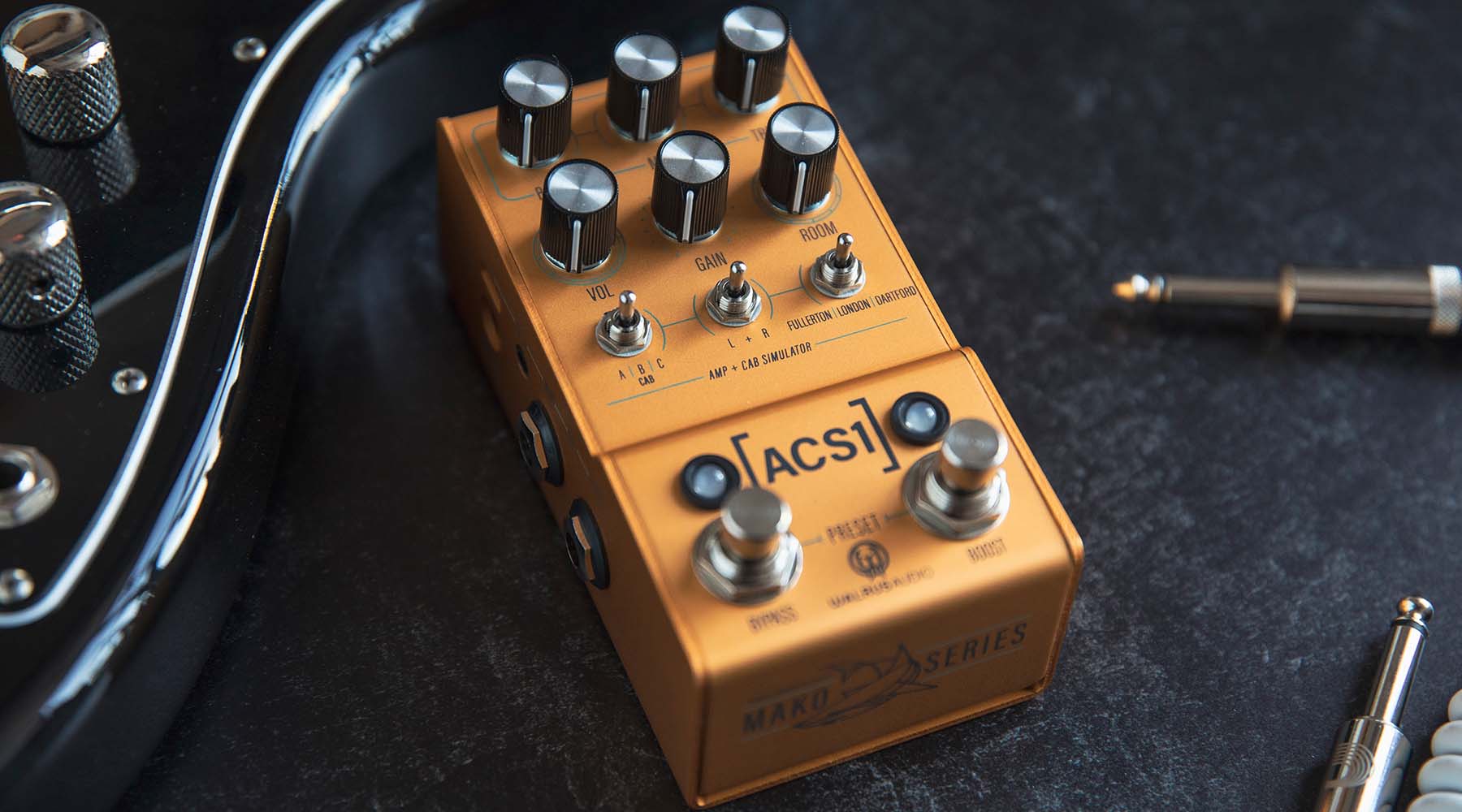
Mastering Your Amp + Cab Sim - ASC1 FAQs
Since the release of the ACS1, we have received a lot of similar questions on how to use this Amp+Cab Simulator to the best of its ability. We have compiled an FAQ quick-reference guide to answer those common questions so you can impress your friends and be the Amp+Cab Sim Guru you were born to be. Let the learning commence!
1. What kind of cable do I use for updating my ACS1?
For all of our Mako Series pedals, make sure you’re using a USB cable that can sync data. Most generic micro USB cables that come with devices are charge-only.
2. What are the preferred specifications for adding 3rd party cab sim IRs
(WAV file time in ms, sample rates, lengths, etc.)
The default settings for an IR file should be 200mS, 24 bit, 48k Hz mono in .wav format. However, loading third-party cabs in different formats through walrusaudio.io will automatically convert them to match the proper format at which the ACS1 runs.
3. Why should I use a DI in tandem with my ACS1 when playing live?
A DI box can be used to convert the unbalanced output from the ACS1 to a balanced output. Balanced signals carry an extra signal wire that helps to cancel out noise better than an unbalanced signal. This becomes especially useful as you use longer cables since the longer a cable is the more chance of interference noise there is.
4. When using my ACS1 in my home studio, do I need a DI?
It is not necessary, but it helps to produce a balanced output.

5. Does headphone impedance matter?
Headphone impedance will not be an issue when using the ACS1 headphone output. The headphone output on the ACS1 is powerful enough to drive a wide range of impedance levels that can be found in all kinds of consumer and pro audio headphones. Low impedance headphones will require less volume, while high impedance headphones might require slightly more volume.
6. Why does my ASC1 feel quiet?
The digital signal processing chips have a certain amount of allowable output headroom but have plenty of volume on tap to run direct. Increasing the level at a mixer/interface is a great way to increase volume if you feel your ACS1 is “too quiet.”
7. I am using a DI box and FOH wants more signal than I can give. What should I do?
When a stronger signal is desired, we recommend using a line isolator. They are similar to a DI, but interface better with active electronics (like pedals) and do not inherently lower your signal level going to your console/interface.

8. How do the volume and gain knobs work together?
Does turning down the volume knob reduce some of the amp compression?
In v1.10 and v1.00, the volume and gain knobs are interactive with each other, so the gain level affects the volume and vice versa. This behaves similarly to the real tube amps that the ACS1 was modeled after. In v1.25 we normalized the two controls to reduce how much they interact with each other. This way the volume stays more steady when adjusting gain, and the gain stays more steady when adjusting volume.
Both the volume and gain controls will have their own effect on the compression of the signal. If you would like to reduce the amount of compression it is always recommended to reduce the volume and or gain levels to your desired output feel.
9. How does the global EQ work?
How is it different from adjusting the EQ in the individual amp settings?
The individual EQs are built into the amp models and use filter structures similar to what would be found in the actual amps. They use complex filtering and will react differently with the tube simulations. The output global Low Pass Filter & High Pass Filter are accessible by holding down the bypass switch and adjusting the bass and treble knobs. These act as light roll-off filters that are after the amp model and IR’s. Think of the Regular EQ like using your amps tone controls, and the Global EQ like adding two post filters from your mixer/DAW.
10. Why doesn’t my ACS1 have more gain?
We designed the ACS1 amp models to be set around the “edge of breakup,” creating a clean platform that's great for pairing with overdrives, distortions, and fuzz!
11. What are the factory presets?

To learn more about the ACS1, click here.
If you have further questions about your ACS1 or any other Walrus Audio products, please reach out to our help desk at help@walrusaudio.com. We are happy to troubleshoot any issues or discuss your favorite episode of Adventure Time.
